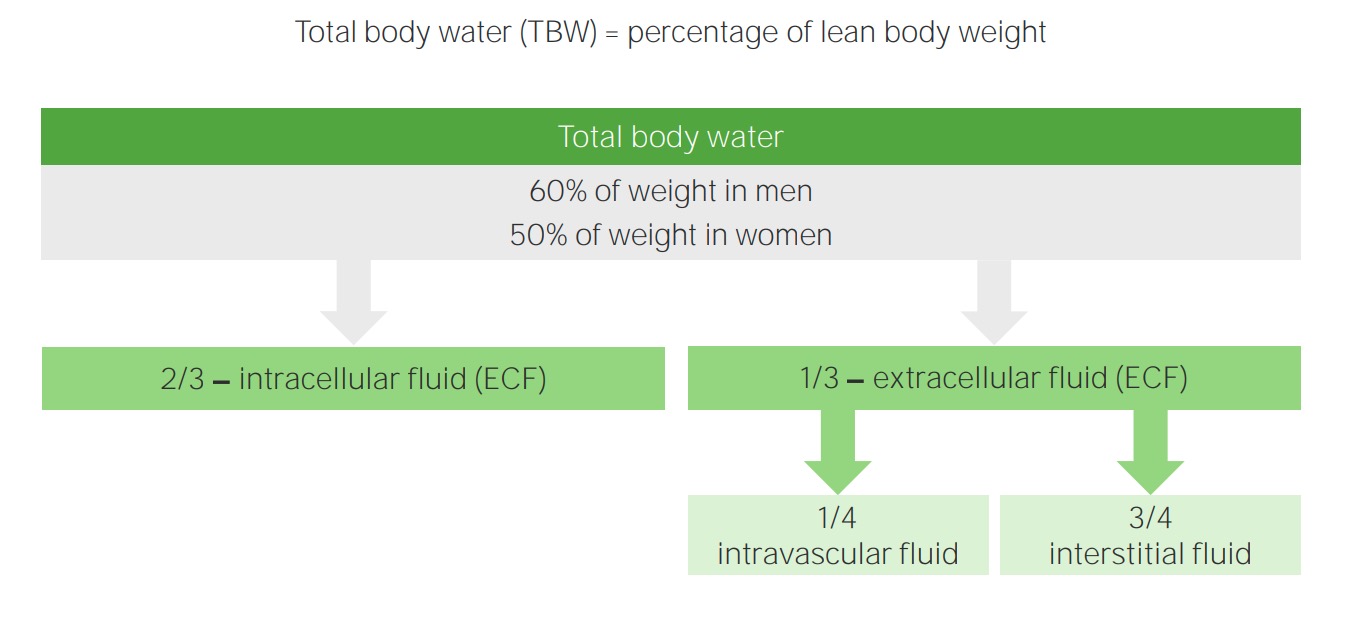Playlist
Show Playlist
Hide Playlist
Review of ADH Regulation
-
Slides Water Balance Hypo and Hypernatremia.pdf
-
Download Lecture Overview
00:01 Let's talk a little bit more about ADH and its regulation. 00:04 So again, antidiuretic hormone or ADH is a decapeptide. 00:07 It's synthesized in the supraoptic nucleus of the hypothalamus and it's secreted by the posterior pituitary. 00:14 It's regulated by both osmotic and nonosmotic mechanisms. 00:22 Now, there is two types of ADH receptors that ADH combined to. 00:26 In terms of this top, what's most important is the V2 or Type 2 receptors that are located in the basal lateral surface of the collecting duct. 00:34 That's what mediates water reabsorption. 00:36 So again, we've got ADH, it binds to the basal lateral surface of that V2 receptor. 00:41 It then causes stimulation of aquaporin channels into the apical membrane of the collecting duct to cell. 00:48 ADH can also bind to V1A or Type1 A receptors that are located in the vasculature and help to control vascular tone. 00:56 If you recall in the ICU in the critical care setting, we oftentimes use vasopressin as a vasopressor and our patients. 01:05 so we just talked about before how there's two main mechanisms that stimulate ADH release from that posterior pituitary. 01:12 One is an osmotic mechanism, meaning that our osmolarity gets high, and our body knows that we need to actually drink more water to bring that osmolarity down low. 01:21 So that's our osmotic stimulus. 01:24 The other is a nonosmotic stimulus. 01:27 Stimulated by a decrease in volume. 01:29 So let's go over what that means. 01:31 In the Osmo regulation, things like serum osmolarity, when that gets high, that's sensed our sensors, our hypothalamic, osmoreceptors. 01:41 When they sense an increase in osmolarity they will then produce and release ADH. 01:48 ADH then acts at that kidney in order to insert those aquaporin channels so we reabsorb water. 01:53 And at the same time we get thirsty, so we will drink water. 01:59 In the situation of volume regulation, if we have too little volume, then remember our body wants to preserve that vascular tone in that vascular volume. 02:08 So it wants us to reabsorb water. 02:12 What's actually sensed is the effective tissue perfusion. 02:16 So the actual sensors or our Macula densa our afferent arterial, our atria, and our carotid sinus. 02:24 Our effectors are going to be the Renin Angiotensin Aldosterone System. 02:28 So if I have too little perfusion, RAAS is going to be activated in order to reabsorb sodium. 02:34 Atrial natriuretic peptide, and some of the ANP related peptides are going to be suppressed. 02:39 We want to preserve our sodium. 02:42 And then norepinephrine will be stimulated in order to increase vascular tone. 02:45 And finally, ADH will be released. 02:48 Why? Because ADH will help us reabsorb water and in concert with everything else, sodium, vasoconstriction we can preserve our vascular volume. 03:00 So this is a graphical representation of what I'm talking about and the relationship between ADH release and these two different mechanisms. 03:07 So on the left, what we can see is a graph on the y-axis of plasma ADH. 03:13 The x-axis is plasma osmolality. 03:16 So these were human subjects that basically were restricted from water. 03:20 And as their osmolarity rises, you can see that there is a reliable relationship between ADH release. 03:27 So at about 285 to 290 mOsm/kg, we can see that ADH is released. 03:33 Remember, what happens when ADH is released is not only do we have those aquaporin channels that are inserted to reabsorb water. 03:40 We also get very thirsty. 03:42 So we're going to consume more water. 03:45 Now, on the graphical representation on the right, this was actually an experiment done in rats, where they manipulated the total blood volume of rats. 03:53 So on the y-axis, we have plasma ADH again, and on the x-axis, here we have blood volume depletion. 04:01 And you can see that when rats were depleted by about 10% of their total body volume, that we have an increase in ADH, and this mechanism is so important that it will supersede osmolarity. 04:14 Meaning that if our patients are hyperosmolar, but they have their total body volume is low, ADH will still be released even though they have a low osmolality. 04:25 So it's a very important concept to understand.
About the Lecture
The lecture Review of ADH Regulation by Amy Sussman, MD is from the course Water Balance: Hypo- and Hypernatremia.
Included Quiz Questions
Which of the following is true regarding the neurohormonal response to volume depletion?
- RAAS is activated in order to reabsorb sodium.
- Carotid body receptors sense intravascular volume depletion and inhibit the release of norepinephrine.
- ANP is secreted during volume depletion to decrease sodium excretion.
- ADH is released from the anterior pituitary gland in response to hypothalamic stimulation.
Which of the following is true regarding ADH regulation?
- The stimulatory effect of volume depletion supersedes the inhibitory control of hypoosmolarity.
- ADH binds to its V2 receptor to increase systemic vascular resistance.
- Hyperosmolarity is sensed by specialized receptors in the distal convoluted tubule.
- ADH is not released until plasma osmolality is >300 mOsm/kg.
Customer reviews
5,0 of 5 stars
| 5 Stars |
|
5 |
| 4 Stars |
|
0 |
| 3 Stars |
|
0 |
| 2 Stars |
|
0 |
| 1 Star |
|
0 |




